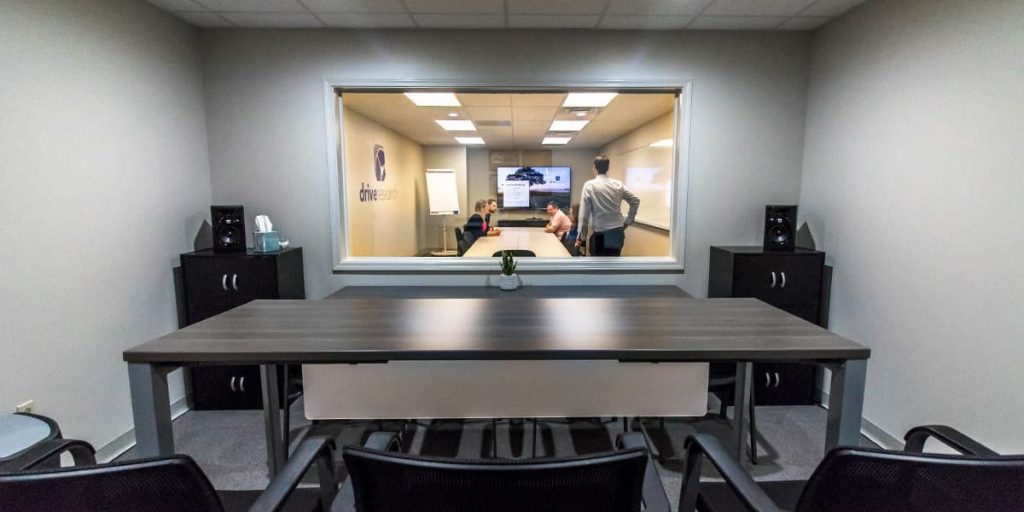
Your employees are your company’s greatest asset — and their voices matter more than ever. Voice of Employee (VoE) market research gives you a window into what your team really thinks, feels, and experiences every day.
By listening closely to employees, businesses uncover valuable insights that help improve workplace culture, boost engagement, and drive productivity. But VoE research isn’t just about surveys — it’s about creating a genuine dialogue that shapes better decisions and a stronger organization.
In this blog, we’ll explore real-world examples of Voice of Employee research in action and explain why investing in your employees’ voices can pay off in big ways.
What Is Voice of Employee Market Research?
Voice of Employee (VoE) market research is the process of researching your employees to understand loyalty, improvement opportunities, and areas of dissatisfaction with their employment.
Conducting this type of employee market research also has a direct impact on customer relations.
Think of it this way: are disengaged employees likely to put in the effort when it comes to customer services? Probably not. On the flip side, happier, engaged employees are far more likely to cultivate positive customer relationships.
So, in order to improve the customer experience (CX), you first need to improve the employee experience (EX).
Employee surveys and Voice of Employee (VoE) market research can lend insight and feedback to correct internal procedures and loyalty before looking to do the same with customers.
Why Is Voice of Employee Research So Important?
Employees are truly one of the most valuable assets any business has. Their firsthand perspective offers insights that can shape and sometimes even transform the direction of a company when they are given the chance to speak up.
Many businesses do not realize the strong return on investment that comes from actively listening to their employees. While it can sometimes feel tricky to measure, recent research shows a clear connection. When employee satisfaction goes up, customer satisfaction usually follows. That is why paying attention to your team’s voice is not just nice to have but essential for long-term success.
Benefits of VoE Market Research
The benefits of conducting VoE market research are many, as this form of market research aims to target all aspects of the employee experience.
By effectively implementing the feedback gathered through VoE market research, businesses can enjoy increased employee engagement, enhanced retention, and more.
Improved Employee Engagement
VoE market research has a direct link to increased levels of employee engagement.
When brands receive feedback from employees from VoE research, they can put their suggestions to use. Employees will benefit from this, as it will be clear their feedback matters to employers. As a result, this often motivates employees to be more engaged.
Higher employee engagement levels can also impact a brand’s long-term success. For instance, brands that place emphasis on employee engagement strategies will see a 21% increase in profitability.
Aside from this, happier employees make for a better overall work environment. Projects run smoother, productivity rates are higher, and employees are willing to go the extra mile.
Enhanced Retention Rates
Increased employee retention rates are also directly related to changes based on VoE market research results. When employees feel their voices are heard by employers, they’re far more likely to work at a company long-term.
By collecting employee feedback, employers will be able to pinpoint significant pain points that could be contributing to lower retention rates. Once these issues have been discovered, employers can then determine ways to correct them.
As a result, employees will be able to enjoy a better work environment, encouraging them to stay with that employer.
For example, let’s say there’s an employer that doesn’t offer enough opportunities for employee growth. Because of this, the company is having a difficult time holding onto employees long-term.
After discovering this is a major pain point among staff, the company creates more opportunities for growth. Over time, they begin to see higher retention rates, as employees are more encouraged to continue working for them as a result of this positive change.
Informed Decision-Making
When businesses conduct VoE market research, they enhance their informed decision-making efforts.
By having direct access to employee sentiments, employers can take this feedback and feel confident they’re making informed changes that will make a difference.
Conducting regular VoE research can also help reveal current trends and pain points that may not be discovered through other means. Because of this, employers are able to base any changes made on relevant employee information.
When relying on this timely employee feedback and data, employers can improve:
- Employee expectations
- Current policies
- Workplace culture/practices
Ongoing Improvements
Continuously gathering employee data and feedback through VoE research also keeps employers aware of any shifts in employee preferences and pain points.
Keeping an eye on these changes and trends within a workforce will help an employer address issues as they arise, leading to ongoing improvements within the company.
By continuously running VoE market research, employers can update policies regarding employee needs as they evolve. Doing this positively impacts the company culture, and ensures employee morale remains high.
Types of VoE Market Research
Many types of market research services fall under the VoE umbrella.
It’s important for employers to spend some time outlining their key objectives for the research, and how they want to use the employee feedback. Take a look at some of the most popular ways a brand can gather employee feedback using market research methods.
Employee Surveys
Running regular employee surveys is a sure-fire way to always stay on top of employee attitudes and trends.
Employee surveys gather important feedback from staff about their job, such as overall satisfaction rates, company culture, and other important organizational features.
Questions asked in an employee survey aim to measure their opinions on management, coworker relations, company policies, benefits, and other related topics.
There are endless benefits to running employee surveys. Employers are able to hear straight from their staff about what works and what doesn’t within their company.
As a result, this enhances staff engagement, loyalty, and retention, and creates a strong bond between them and their employer.
Recommended Reading: Conducting Employee Surveys [2025 Guide]
In-Depth Interviews
A form of qualitative research, in-depth interviews, or IDIs, gather detailed feedback from a group of participants in the form of a one-on-one conversation.
Led by a trained interviewer, IDIs will gather an employee’s thoughts and attitudes around their workplace.
IDIs often follow a semi-structured format, with a set list of questions and room to explore new topics as they come up during conversation.
IDIs for employee research gather detailed feedback that may not be revealed in other methods, thanks to their conversational style. They also foster a connection between the interviewer and employee, making them more likely to share useful information.
Focus Groups
Running focus groups is another good option for employers looking to gather feedback from staff.
Focus groups involve a small group of participants (in this case, employees) being led through a discussion by a moderator.
This market research method aims to gather detailed feedback about an employer by encouraging employees to share about their experiences. Focus groups feature set questions but also promote additional conversations between employees.
Employees will be able to share in-depth thoughts about their work experience, providing rich feedback for their employers. Employers will be able to learn different perspectives from their staff through focus groups, giving them an insider’s perspective.

Employee Exit Interviews
Lastly, employee exit interviews are essential for employers wanting to understand why staff leave.
Just as it sounds, an exit interview is a discussion between an employer and an employee who is leaving the company. The goal here is to understand why the employee is leaving and what led to their ultimate decision.
Employee exit interviews provide helpful feedback about the reasons they choose to leave a company. Through this conversation, employers will be able to learn about the underlying reason an employee left, giving them insight into their workplace.
Ultimately, these interviews help improve retention rates and workplace culture.
Example VoE Market Research Project
Here is an example of how a VoE market research project would work combining both quantitative and qualitative methodologies.
We’ll use the fictitious business, Company ABC, to walk you through the standard VoE approach. This is a theoretical example of what a market research proposal or scope of work would look like as presented by an employee survey company.
Defining the Objectives
Before getting started with a new customer experience (CX) program, Company ABC would like to survey its employees to better understand current areas that drive loyalty and satisfaction, areas of improvement, and touchpoints of the customer experience that should be prioritized in future research efforts.
To address the objectives at hand, Company ABC would like to first contract with an independent third-party market research partner to conduct a VoE study.
Determining the Methodology
It is recommended Company ABC use a two-step employee engagement approach including both (1) quantitative and (2) qualitative market research to address the objectives.
The first step will be a quantitative online survey with all employees at Company ABC having an opportunity to share their opinions.
The second step will involve individual one-on-one interviews (phone and in-person) to discover more in-depth responses as a follow-up from the survey.
Surveying Employees
The market research company will draft a survey document for review, program the survey in the online software, and test the survey before launch.
It is recommended that the VoE firm work with Company ABC to obtain a database of employee contact information or emails for direct invitations. Direct invitations will eliminate the chances of duplicate entries.
Another option is to post the survey link on Company ABC’s intranet with multiple notifications to encourage participation and engagement.
Additionally, we recommend a pre-awareness email or notification be sent from the management team or owner to all employees.
The invitation email should include:
- Details of the VoE survey
- Why the study is important
- How it will be conducted
- What to expect
Once employees are notified, the VoE company will send an initial email survey invitation along with at least 2 reminder notifications.
Interviewing Employees
Personal reach-outs to staff are essential during an employee engagement project.
Although the online survey focuses on quantitative measurement, the qualitative portion aims at gathering in-depth feedback through a two-way research conversation.
A large focus of the interview script will be on the next steps with CX and the examination of touchpoints with customers. This will be key in prioritizing and adding clarity for Company ABC as the company looks to identify the most important touchpoints to include in follow-up CX surveys.
The market research firm will work with Company ABC to schedule one-on-one in-depth interviews (IDIs) with stakeholders within certain departments.
Reporting on the VoE Findings
Following the conclusion of fieldwork, the market research company will prepare a full report of findings, complete with dashboards, infographics, strategy recommendations, and an appendix of question-by-question results.
The results will all be benchmarked against others who work in the industry across the United States to understand where Company ABC sits in relation to other similar companies.
Contact Our Voice of Employee Market Research Company
If you want to truly understand what your employees think, feel, and need, we’re here to help. Our team specializes in employee surveys and VoE market research that goes beyond basic surveys. We dive deep to capture authentic insights that drive real change and improve workplace culture.
Whether you’re just starting to explore employee feedback or looking to enhance an existing program, we offer tailored research solutions designed to fit your unique goals and challenges.
Reach out today to learn how our market research experts can partner with you to listen to your employees, boost engagement, and create a stronger, more successful organization.
Let’s start the conversation and unlock the power of your team’s voice together.



